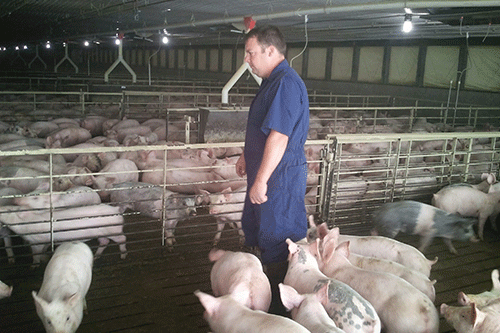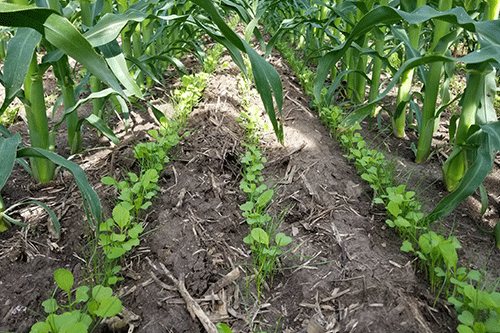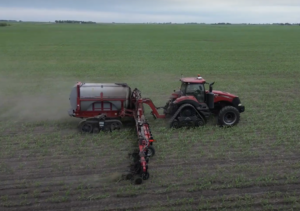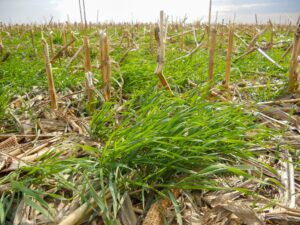By 4R Plus

Jason Russell approaches business decisions with an open mind. He returned to the Linn County family farm in the early 2000s to manage the hog finishing enterprise, which he purchased and has expanded. He also no-tills corn and soybeans in Linn, Jones and Delaware counties, grows a variety of small grains, and seeds cover crops on all the acres he farms.
Russell says farming should be fun and he’s eager to learn. “When you start out like I did by doing some things on your own, you look at farming differently,” he said. “I want to learn more every day, which led to changes in how I manage hog manure and nutrients.”

Rethinking hog manure management
Russell was applying manure in the fall after harvest. “I was following what I knew to be standard practices and expected the corn to look terrific in the spring, and it looked terrible,” he said. “It was obvious I needed to do things differently with nutrient and manure management, and I learned about the nitrogen cycle.”
Russell decided to experiment and apply the manure in the spring. His corn yields improved, and he has been applying manure in the spring ever since. “The manure contains a consistent amount of nitrogen,” he said. “But I knew I could do even better in the corn and soybean rotation managing nutrients and keeping the nitrogen available for the corn.”
The Plus Side of cover crops
At a field day, Russell learned that cover crops tie up nutrients, which piqued his interest. “I did my homework and gave cover crops a try and observed plant health and yields improve,” he said. “When I seed cereal rye ahead of soybeans, the cover crop soaks up the manure in the spring – ties it up. The soybeans do great, and the nitrogen stays put for the corn crop.

“I think I’m winning because my best corn yields were no-till corn-on-corn into cereal rye with hog manure and very little synthetic fertilizer,” he added. “Getting the timing right on seeding cover crops and applying manure is important and it’s a system that’s working well for me.”
His advice: “Don’t let conventional wisdom govern trying something different or preventing you from trying something different. There’s a lot we as farmers can learn about nutrient management and conservation. Test an idea on a smaller scale and expand as you learn.
Russell acknowledges, “I did two things that surprised a lot of folks. I planted no-till corn into cereal rye, and it worked out. I attribute the extra carbon and microbial life in the soil as a boost for the crop.”
“Develop a relationship with a neighbor that has experience with something you are interested in trying. See if they will do some custom work for you and get you started,” he added. “If you are interested in cover crops, I recommend starting with cereal rye before soybeans.”
Russell has expanded into other cover crops, such as clover and rapeseed, in his cereal rye mix. He is also fine-tuning a system of growing chickpeas and flax.
Fine-tuning manure application
Most of the manure is custom applied on Russell’s farmland, and what he doesn’t use he offers to neighboring farmers. “Our custom applicator uses the latest technology. Our manure is analyzed by infrared sensors and applied at the right rate,” he said. “It’s mapped in real time. I have peace of mind knowing that we’re adhering to the 4Rs of nutrient management.”
Regarding soil health, Russell says there’s a Plus Side to his 4R Plus system. “When we get a heavy rain, it soaks in, and when it’s dry, the soil holds the moisture better,” he said. “I’ve noticed more wormholes in the soil thanks to no-till and cover crops. The worms help with water infiltration and have loosened up compaction issues.”
Join the Plus Side movement
What conservation and nutrient stewardship practices are you using to assure a more productive crop now and in the future? Tag @4RPlus on your Facebook or Twitter post to share your experience. On Twitter, use hashtags #PlusSide, #4RPlus, #Weatherproofing.



